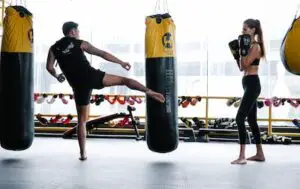Capoeira, a vibrant martial art form originating in Brazil, encompasses a variety of styles, each with its unique characteristics and historical roots. In this article, we delve into the captivating world of Capoeira Batuque, a lesser-known but culturally rich style. From its origins and distinctive techniques to its relevance in modern times, we aim to shed light on the captivating tradition of Capoeira Batuque.
What is Capoeira Batuque?
Capoeira Batuque is a form of Capoeira that traces its roots back to the African slaves brought to Brazil during the colonial era. Developed in the state of Bahia, Capoeira Batuque gained prominence in the mid-19th century and has since evolved into a unique blend of martial arts, dance, acrobatics, and music. It is characterized by its rhythmic movements, fluid kicks, and graceful spins, making it a visually captivating martial art.
What are the origins of Capoeira Batuque?
Capoeira Batuque has its origins in the African traditions of ritual combat and dance. African slaves, brought to Brazil, preserved their cultural practices by disguising them as dance forms. Capoeira Batuque, with its emphasis on agility, evasion, and improvisation, became an essential means of self-defense for slaves in a hostile environment. Over time, elements of indigenous Brazilian culture and European martial arts also influenced the development of Capoeira Batuque.
What are the key techniques of Capoeira Batuque?
Capoeira Batuque incorporates a wide range of techniques that blend dance-like movements with martial arts skills. Here are some key techniques:
- Ginga: The foundational movement of Capoeira Batuque, it involves a continuous back-and-forth rocking motion that allows practitioners to maintain balance, evade attacks, and set up offensive moves.
- Au: A fundamental acrobatic movement, the “Au” is a cartwheel-like flip used for evading attacks, transitioning between techniques, or executing aerial kicks.
- Meia Lua de Frente: This spinning crescent kick is one of the signature moves of Capoeira Batuque. It combines grace and power to deliver strikes from different angles.
- Chapa de Costas: Translating to “back kick,” this technique involves a powerful kick executed with the heel directed backward. It is often used to counter opponents or create distance.
- Queda de Rins: Also known as the “Kidney Fall,” this move involves a swift sideways drop to the ground, offering an evasive maneuver while maintaining a low center of gravity.
- Martelo: This spinning kick involves a 360-degree rotation and targets the opponent with a striking blow using the heel or the top of the foot.
What role does music play in Capoeira Batuque?
Music is an integral part of Capoeira Batuque, serving as a unifying force that synchronizes movements, dictates the pace, and evokes emotions. A small orchestra, known as a “roda,” accompanies the Capoeira Batuque players. The orchestra typically consists of berimbaus (a musical bow), pandeiros (tambourines), atabaques (drums), agogôs (bells), and occasionally a reco-reco (scraper). The rhythm set by the instruments sets the tone and energy of the game, influencing the intensity and style of the movements. Singing and clapping further enhance the musical experience, conveying the cultural heritage and storytelling aspect of Capoeira Batuque.
How has Capoeira Batuque evolved in modern times?
Like other forms of Capoeira, Capoeira Batuque has evolved over the years. It has transitioned from being a clandestine practice by slaves to a recognized martial art form taught in academies worldwide. With the growth of globalization and increased accessibility, Capoeira Batuque has spread beyond Brazil’s borders, attracting practitioners from diverse cultural backgrounds. Modern Capoeira Batuque often incorporates elements from other martial arts, such as kicks from kickboxing or ground movements from Brazilian jiu-jitsu. Despite these changes, the essence of Capoeira Batuque, including its cultural significance and emphasis on fluidity, remains intact.
What is the cultural significance of Capoeira Batuque?
Capoeira Batuque serves as a powerful cultural symbol, preserving the legacy of African traditions and the resilience of the Afro-Brazilian community. It embodies the spirit of freedom, resistance, and self-expression, providing a platform for individuals to connect with their heritage and cultivate self-confidence. Capoeira Batuque also fosters a sense of community, as practitioners come together in “rodas” to share their passion for this art form. Beyond its physical aspects, Capoeira Batuque serves as a social tool for promoting inclusivity, breaking barriers, and fostering mutual respect.
Conclusion
Capoeira Batuque stands as a testament to the indomitable human spirit and the preservation of cultural traditions. With its mesmerizing movements, rhythmic music, and historical significance, Capoeira Batuque continues to captivate practitioners and audiences alike. By understanding its origins, techniques, and cultural context, we can appreciate the richness of this martial art and its enduring impact on the lives of those who practice it.





